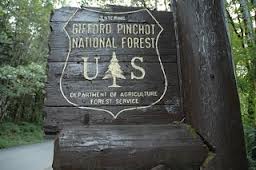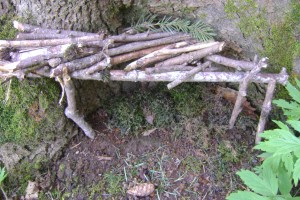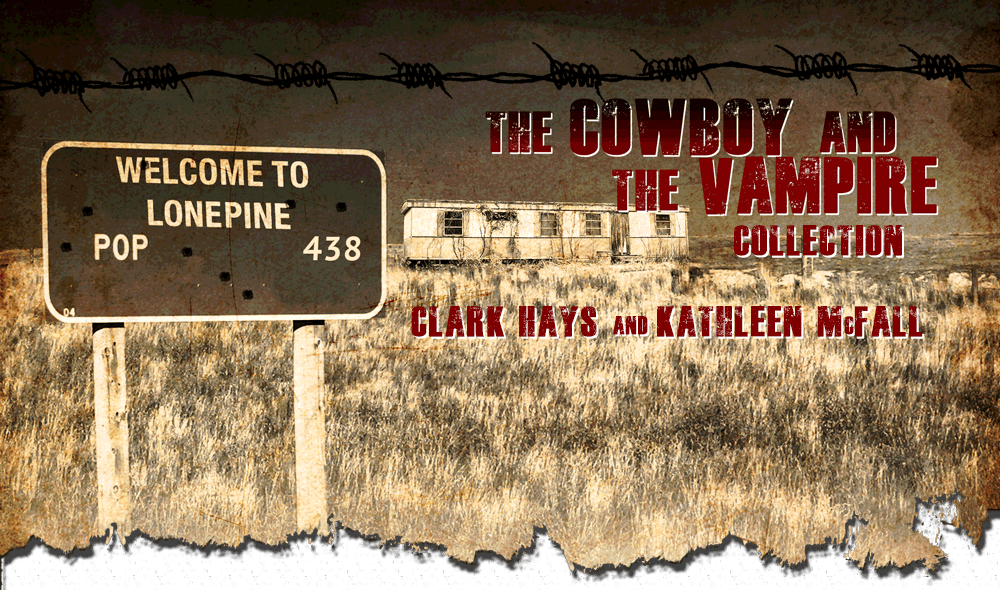Home > Soapbox > Gnome wonderment in an Old Growth forest: a true story
Gnome wonderment in an Old Growth forest: a true story
While gnomes are not as exciting as cowboys, or vampires, they have a certain air of mystery, perhaps because of their scarcity. In fact, some people  believe a dark anti-gnome may also exist, deep in the ancient forests in the still pristine and wild areas known only to Big Foot, called a were-gnome. Recently, I discovered possible evidence of the were-gnome entirely be accident.
believe a dark anti-gnome may also exist, deep in the ancient forests in the still pristine and wild areas known only to Big Foot, called a were-gnome. Recently, I discovered possible evidence of the were-gnome entirely be accident.
As a former geologist, my tendency is to always look at the ground when I walk, chin perpetually touching chest, seeking out the surface clues to that which moves — slowly — beneath. A few months ago on a trail in the Gifford-Pinchot Forest in Washington State, it was this habit that led the Cowboy and I straight to the World Headquarters of the Gnome Navy.
Paralleling the Lewis River, Trail #31 crosses seasonal side streams that rush down from the lofty Cascade mountain range, frigid glacial-fed water racing over and around dark basalt and then fanning out into wide, lacy waterfalls. Both sides of the river are bracketed by dense stands of Douglas fir, western red cedar and big leaf maple, trees towering hundreds of feet in the air where hawks and golden eagles nest (although I rarely see birds given my tendency to look at the ground, but I am told they’re there). I imagine these birds must find gnomes easy pickings. But maybe not the were-gnome version of the species.
During our hike, we eventually reached — about three miles from the trailhead — a depression-era public works wooden lean-to in which loggers and surveyors once took cover. Called Bolt Camp, the shelter is about 15 feet from the Lewis River’s coarse sandy edge. A shelter now for back country campers and wilderness memoirists.
As the Cowboy wandered off toward the river, I noticed the first gnomic evidence — a dozen or so carved wooden pegs inserted in the bark of a streamside Doug fir, like plugs used to tap maple from trees, only tinier, curving up from the base to about eye level. Below the plugs, nestled into the cavities created by the gnarly roots of the tree were flat pieces of wood and bark arranged to form miniature shelters, like the lean-to, only smaller. The exposed edges where the two pieces of wood came together were stuffed with moss tufts so that the inside would be cozy, dry.
 At first, I assumed the tiny structures must be some sort of rodent trap, but who would want to catch mice — the only thing big enough for the little homes — in the forest? And why in such relatively luxurious traps? I cautiously opened up the top of one of the tiny shelters to peer inside. Then another. And another. They were all empty.
At first, I assumed the tiny structures must be some sort of rodent trap, but who would want to catch mice — the only thing big enough for the little homes — in the forest? And why in such relatively luxurious traps? I cautiously opened up the top of one of the tiny shelters to peer inside. Then another. And another. They were all empty.
Odd. Really odd. I looked around, and took out my notebook. Behind the Forest Service shelter was a small knoll and as I walked along the base of the single tree at the top I discovered the entire Gnome Navy barracks: dozens of mini-shelters, macramé rope ladders delicately woven of grass and connecting the individual shelters, a fortress of encircling stones, individual bark bunks for sleeping, a small, tidy yard decorated with moss and pebbles and several signs (including the one that said “World Headquarters of the Gnome Navy”) scratched into pieces of driftwood from the river — all nestled in the roots of this one gigantic tree.
I circled, I looked, I touched. I scribbled. Based on my limited knowledge, gnomes are larger than the size of the barracks, and the bark bunk beds would split under their weight, but since I have never actually seen one, I couldn’t argue with the layout. This intricate, contained and elaborate construction was a ghost barracks. Where was the Gnome Navy’s arsenal? However, if this structure was actully for were-gnomes, it would make sense it was abandoned during the day. The questions rushed through my mind like a lacy waterfall.
A dark green syrupy liquid seeped out from beneath the moss. A gnome and were-gnome war?
I shook this craziness from my mind. Of course, it must have been a bored camper or maybe a lonely slightly crazed Iraq War veteran living in the forest who had built this place, not real gnomes, right? And in a few months time, maybe even weeks or days, with one big rain storm, this silent world would be washed away into the Lewis River, the remnants carried all the way, eventually, to the Pacific Ocean. No one would ever know about this place except me.
I looked toward the river. Should I tell him about the gnome civil war? And then The Cowboy shouted. “Look, I think I see Big Foot tracks.”
